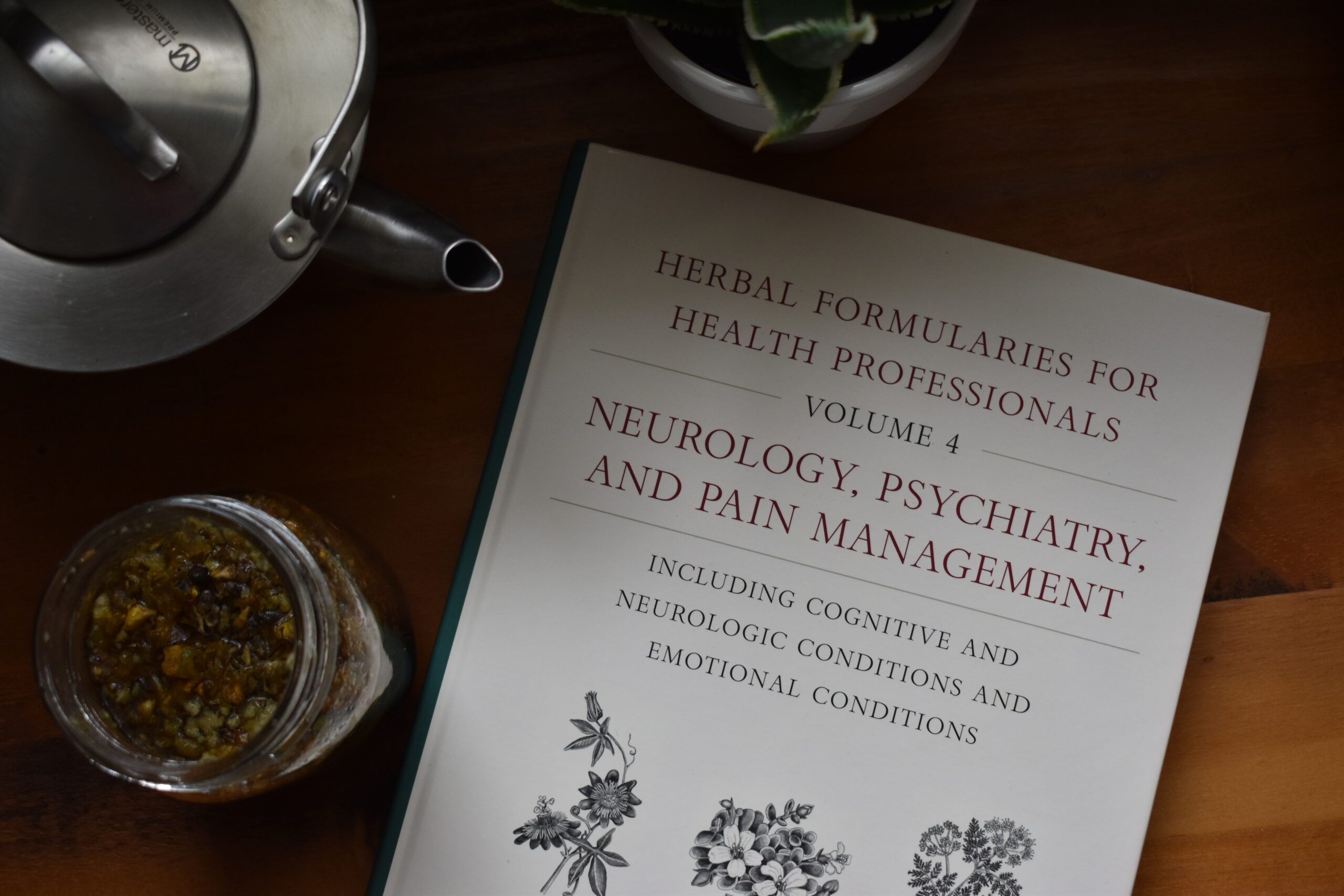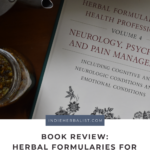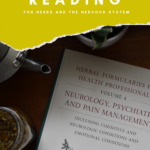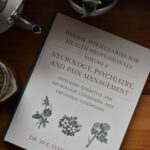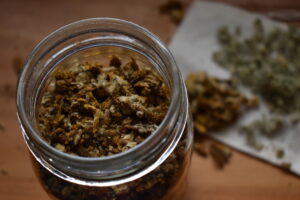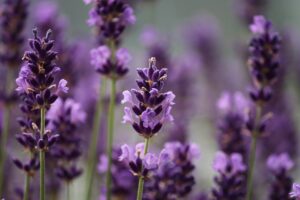Links contained in this post and elsewhere on my website may include affiliate links. When you make a purchase through these links, I earn a commission at no additional cost to you. I only link to products and services that I love - and that I think you will love, too!
This year I’m adding a new series to my herbal bookshelf: Herbal Formularies for Health Professionals. I haven’t gone sequentially, though. I needed volume four for a friend so that’s where I started. In this book review, we will explore this textbook about nervous system herbs.
The full title of the textbook is Herbal Formularies for Health Professionals Volume 4 Neurology, Psychology, and Pain Management. The author of the series is Jill Stansbury, ND.
If you haven’t guessed, it’s for students with advanced knowledge of herbalism. That being said, it’s also easy to read and well organized. I think it could be suitable for intermediate students looking for a challenging read. It would also be suitable for any herbal student with a background as a medical professional.
The challenges of nervous system herbs
In my experience, this is often an area of wellness that herbalists shy away from. There’s a good reason for that. The nervous system is complex. Having a team of medical professionals is especially important in these cases.
Many clients with psychiatric disorders, especially, are on necessary prescription medication to help them cope and manage symptoms. These medications are often necessary for the safety and wellness of the client, and also for their families and the community as a whole.
However, these medications can be some of the most likely to interact with herbs in undesired ways. In some cases, there’s a complex balance between providing information about herbal choices for clients as requested and potentially creating an unethical situation that places a client in harm’s way.
Chapters and sections overview
This book provides a lot of detailed information. It includes:
- short herbal profiles
- summaries of disorders
- suggested formulas for specific conditions
Overall, the book has four parts.
- Chapter one is about customizing formulas. It also includes helpful questions to ask clients.
- Chapter two focuses on neurological conditions.
- Psychiatric disorders is the topic of chapter three.
- Chapter four covers herbal formulas for pain.
What this book does well
Dr. Stansbury does a phenomenal job distilling years of experience into a useable handbook.
The summaries and background information are detailed. I love that so much information is provided in one place. Each chapter begins with an overview of the topic. After that, sections cover specific problems. Within these sections, you’ll find background information that provides a good working knowledge of the topic. Each topic also includes helpful formulas.
The end of each chapter includes entries about specific herbs. These herbal highlights showcase plants that are especially useful for the topic. I must say- the selection of herbs really impresses me! I have a working knowledge of around 400 herbs, so it’s not easy to surprise me with a plant that I don’t know.
If you want a detailed reference that covers a lot of lesser-known plants, this is it!
Everyday emotional wellness for home herbalists
Not sure you’re ready to dive into the clinical side of nervous system health? That’s perfectly ok!
For everyday emotional wellness, these books are good alternatives for home herbalists. Herbs for Stress and Anxiety (#affiliate) by Rosemary Gladstarr is a classic. Herbal Medicine for Emotional Healing (#affiliate) by Tina Sams is more recent. Both books are perfect for anyone who enjoys creating with herbs at home. Each one provides ample recipes and ideas to craft heartwarming self-care for you and your loved ones.
